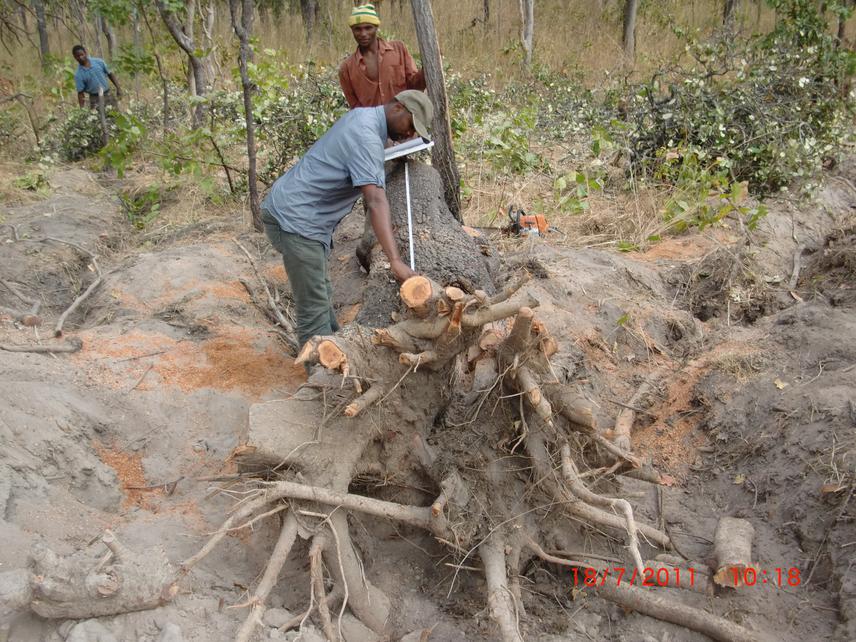Wilson Ancelm Mugasha
In Tanzania, Village Land Forest Reserves (VLFRs) adjacent to the high biodiversity Eastern Arc Mountains (EAM) provide buffer for conservation of biodiversity. Community participation in sustainable management of VLFRs adjacent to the EAM is necessary for conservation of forest and associated biodiversity. However, majority of VLFRs including North Magubike have no updated Forest Management Plans (FMPs). This project intends to conserve the biodiversity of the North Magubike Village Land Forest Reserve while ensuring provision of co-benefits for biodiversity conservation such as carbon sequestration enhancement, maintaining abundance of vertebrate species by conserving their habitat and reduce pressure on the high biodiversity forests on the adjacent EAM.

Establishment of belowground biomass estimating models in for miombo wooodlands in Katavi, Tanzania. ©Ernest Mauya
Half of forested land in Tanzania is under Village Land Forest Reserves (VLFRs), which account for large proportion of utilized woods. VLFRs adjacent to the high biodiversity Eastern Arc Mountains (EAM) provide buffer for conservation of biodiversity. However, most VLFRs have no updated sustainable management guidelines. Conversely, unregulated utilization of forests has continued. This threatens both biodiversity and people’s livelihood.
Developing Forest Management Plan (FMP) for the VLFRs is imperative to address these problems. On the other hand, implementation of FMP is not straightforward especially for local communities with inadequate technical knowledge. As custodian of VLFR, communities require training on skills and knowledge to apply guidelines stipulated in FMP. Guided by District Forest Officers (DFOs), smooth implementation of FMP requires simple and user-friendly guidelines. DFOs are responsible to assist implementation of FMPs for VLFR but they also have inadequate capacity to implement FMPs. Therefore, improving and enhancing DFOs Capacity is necessary. This project is a pilot study to be applied in North Magubike VLFR located in Kilosa district. The study intends to regulate forest utilization by enhancing sustainable utilization of the VLFR through developing practical oriented management guidelines; and train DFOs on the implementation of developed guidelines.
Output from this project will include:
- Updated information of the tree species diversity and growing stock;
- Zonation: this will involve dividing the forest area into several blocks. This will include conservation area, i.e. forest area with conservation value or ecological importance; and utilization blocks for serving forest products such as fuel-wood and timber for building.
- Guidelines which stipulates how the conservation area will be managed and how and extent of extraction of forest products from the forest area set utilization; and
- Guidelines describing implementation of developed guidelines.
The outcome from this project will be:
- Foresters from local government have appropriate skills and knowledge to guide villagers to implement guidelines for managing their forest;
- Enhance sustainable utilization of Village Land Forest Reserve while protecting the forest biodiversity; and
- Strengthen the link among district forest officers, village natural resource committee and researchers from Sokoine University and Tanzania Forestry Research Institute.
Header: Forest inventory at SUA Training Forest at Olmotonyi, Arusha, Tanzania. ©Josiah Katani.